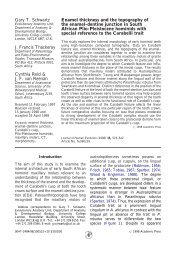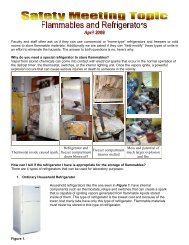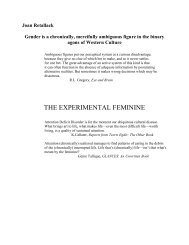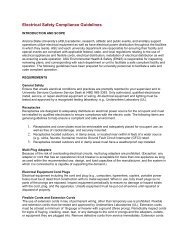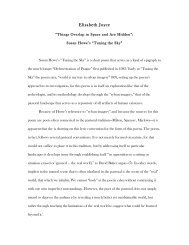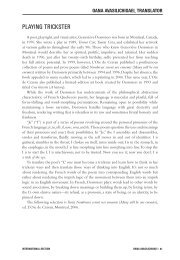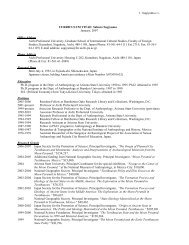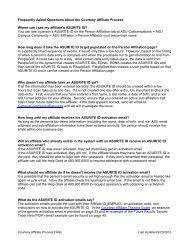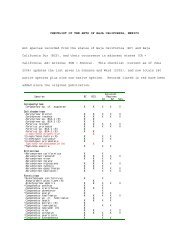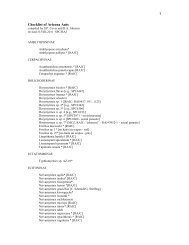Standards of Internal Controls - Arizona State University
Standards of Internal Controls - Arizona State University
Standards of Internal Controls - Arizona State University
Create successful ePaper yourself
Turn your PDF publications into a flip-book with our unique Google optimized e-Paper software.
6.4 NETWORK SECURITY<br />
The objectives <strong>of</strong> network security controls include protection from unauthorized entry, misuse or<br />
alteration <strong>of</strong> information, and denial <strong>of</strong> service.<br />
Standard Of <strong>Internal</strong> Control Risk If Standard Is Not Achieved<br />
6.4.1 Custodians <strong>of</strong> data processing<br />
equipment who operate<br />
communications networks should<br />
document and maintain descriptions<br />
<strong>of</strong> their network topology.<br />
Refer to risk: D-1<br />
6.4.2 <strong>Standards</strong> based protocols should be<br />
used whenever they are available.<br />
Only tested and approved protocols<br />
will be allowed on our networks.<br />
Refer to risks: D-2, D-3<br />
6.4.3 Network managers should utilize<br />
configuration, performance, fault,<br />
accounting, and security management<br />
tools to monitor networks.<br />
Refer to risks: D-1, D-2, D-3, D-4, D-<br />
6, D-7<br />
6.4.4 Network addresses and names should<br />
be obtained and maintained as<br />
specified in IT standards.<br />
Refer to risks: D-2, D-3, D-7<br />
6.4.5 Custodians <strong>of</strong> computer equipment<br />
should make data encryption facilities<br />
available to protect data transmission<br />
<strong>of</strong> proprietary information. Passwords<br />
should be encrypted during network<br />
transmission.<br />
Refer to risks: D-1, D-4, D-5<br />
6.4.6 <strong>Internal</strong> access to university networks<br />
should be controlled by single factor<br />
authentication (e.g., a unique user ID<br />
and password or token<br />
authentication).<br />
Refer to risks: D-1, D-4, D-5<br />
D-1 Proprietary or confidential<br />
information may be disclosed or lost,<br />
which may adversely affect the<br />
university's financial position or<br />
reputation.<br />
D-2 Data may not be accurately or<br />
completely transferred.<br />
D-3 Transmissions may not have adequate<br />
error correction.<br />
D-4 Sensitive information may be<br />
accessed and/or disclosed to<br />
unauthorized personnel.<br />
D-5 Proprietary information stored on<br />
computer systems may not be<br />
properly protected.<br />
D-6 Proprietary data may be disclosed to<br />
unauthorized personnel during<br />
transmission.<br />
D-7 Data bases may not contain accurate<br />
and complete information after<br />
system failure.



